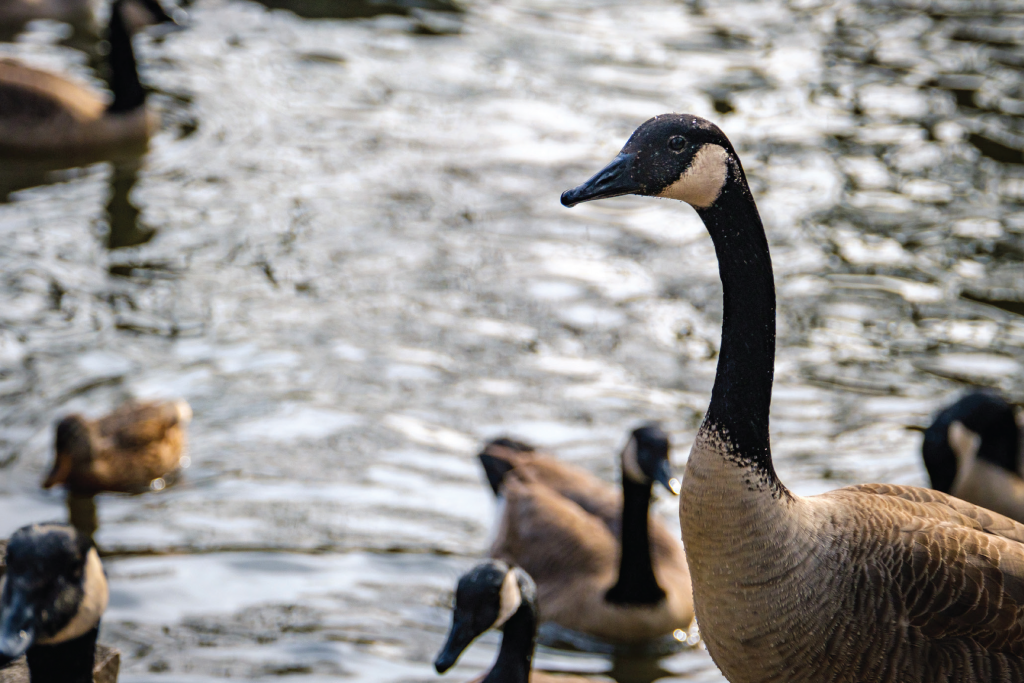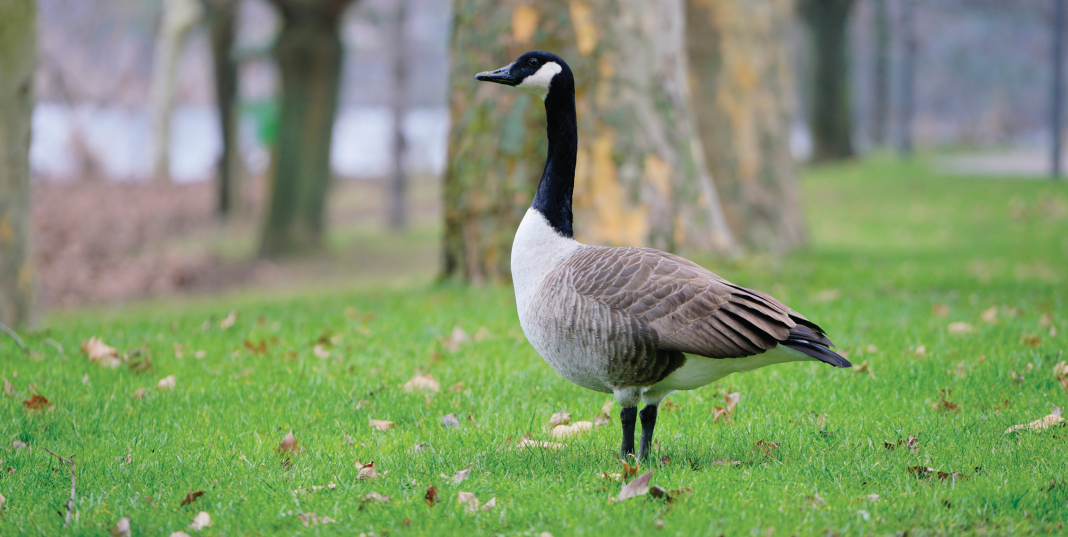TEAMWORK LESSONS FROM GEESE
Look up in the sky. It’s a bird, it’s a plane. No, it’s Canadian geese flying south in their iconic “v” formation, typically during the months of September and October. However, I just saw a flock last week so obviously it can be later in the year. Normally, I hear them before I see them because they “honk” while they’re flying. This is their way of keeping the flock together. They don’t let bad weather or nighttime keep them from flying so when it’s cloudy or dark with limited visibility, they are able to keep track of each other by honking.
As human beings, we often (but not always) choose our leaders because of their knowledge and abilities. Not so with geese. When migrating, the duty of leading the flock (or skein) is a shared responsibility. The vertex of the formation is a difficult and exhausting position to be in so it changes frequently. Each bird in the “V” flies a little higher than the bird in front of them. This reduces wind resistance and conserves energy for every bird in the formation except the lead bird so when the leader tires, it will fall back and another bird will take the lead. This is teamwork in action.
Migrating Canada geese can fly up to 1,500 miles in 24 hours and fly 2,000 to 3,000 miles in total to get to their destination. Some will spend their winters in the southern United States or Mexico. It’s interesting to note, however, that some geese don’t migrate at all. If there’s open water and available food, they may become year-round residents. They are highly adaptable.
 A goose’s body size can range from 30 to 43 inches with a wingspan of 4.2 feet to 5.6 feet. You’ll be pleased to know that wild Canadian geese mate for life but domesticated geese prefer to play the field and can have many mates. Wild geese will stay loyal to their mates until death at which time they may seek out another mate. Interestingly, geese exhibit signs of mourning when they lose a mate. They separate from the flock and will often make mourning-type sounds.
A goose’s body size can range from 30 to 43 inches with a wingspan of 4.2 feet to 5.6 feet. You’ll be pleased to know that wild Canadian geese mate for life but domesticated geese prefer to play the field and can have many mates. Wild geese will stay loyal to their mates until death at which time they may seek out another mate. Interestingly, geese exhibit signs of mourning when they lose a mate. They separate from the flock and will often make mourning-type sounds.
Come spring, you may hear or see geese heading north. Normally they will return to the same nesting site every year. The female chooses the nesting site and does most of the nest construction while dad stands guard. The female lays between 4 and 9 eggs and will lay one every 1 to 2 days. The incubation period is about 30 days and during this time she will only leave the nest for very short periods of time to eat and drink. Soon after hatching, the goslings are taken to the water to eat. Mom and dad are very protective of their broods for 10-12 weeks after hatching. As the goslings grow older and learn to fly, the parents become less protective.
The Canada Goose is protected under the Migratory Bird Treaty Act of 1918. This means that it is illegal to capture, kill, trade, transport, or damage eggs or their nests without permission from the US Fish and Wildlife Service. There is, however, a hunting season for geese in Texas. Here is the link for the regulations: https://tpwd.texas.gov/regulations/outdoor-annual/regs/animals/goose















